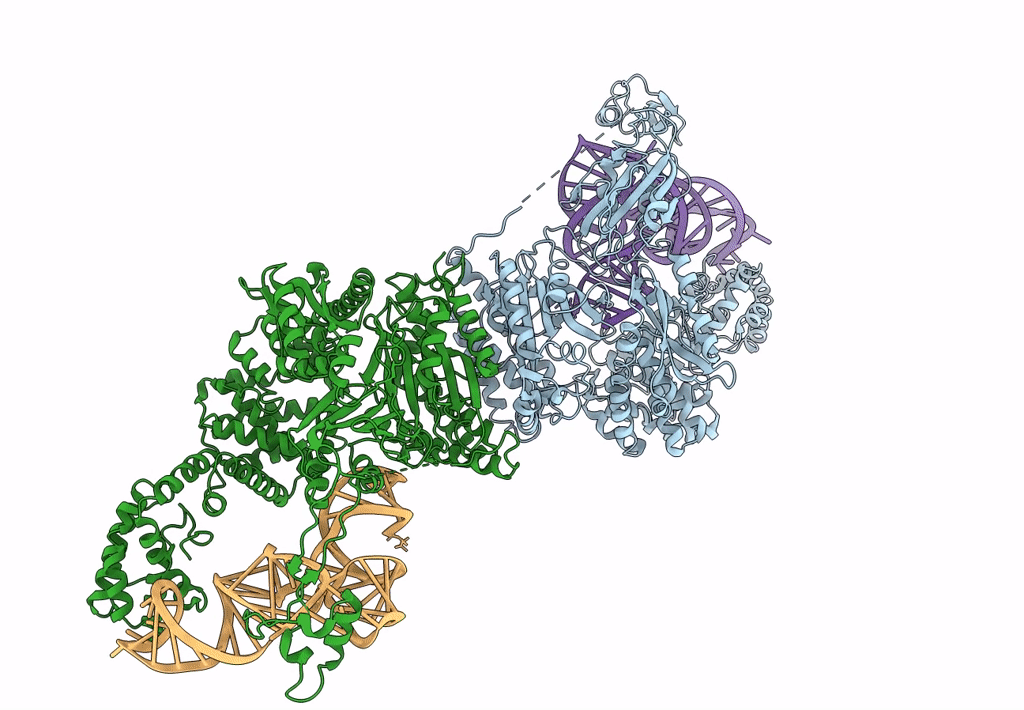
Deposition Date
2022-10-02
Release Date
2023-04-26
Last Version Date
2024-07-03
Entry Detail
PDB ID:
8H1C
Keywords:
Title:
Cryo-EM structure of Oryza sativa plastid glycyl-tRNA synthetase in complex with two tRNAs (one in tRNA binding state and the other in tRNA locked state)
Biological Source:
Source Organism:
Oryza sativa Japonica Group (Taxon ID: 39947)
Oryza sativa (Taxon ID: 4530)
Oryza sativa (Taxon ID: 4530)
Host Organism:
Method Details:
Experimental Method:
Resolution:
4.50 Å
Aggregation State:
PARTICLE
Reconstruction Method:
SINGLE PARTICLE


